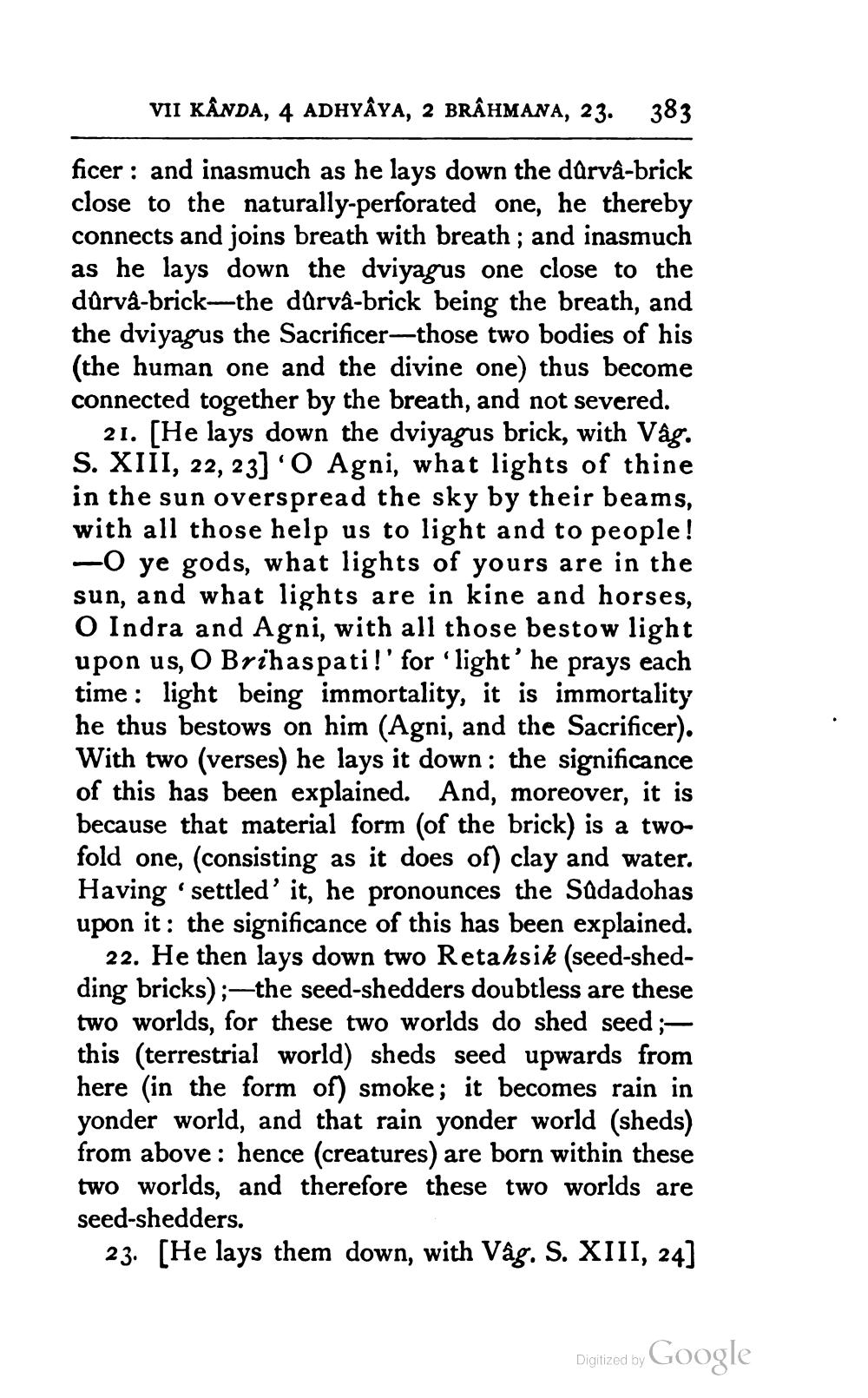________________
VII KANDA, 4 ADHYÂYA, 2 BRÂHMANA, 23. 383
ficer and inasmuch as he lays down the dûrvâ-brick close to the naturally-perforated one, he thereby connects and joins breath with breath; and inasmuch as he lays down the dviyagus one close to the dûrvâ-brick-the dûrvâ-brick being the breath, and the dviyagus the Sacrificer-those two bodies of his (the human one and the divine one) thus become connected together by the breath, and not severed.
21. [He lays down the dviyagus brick, with Vâg. S. XIII, 22, 23] 'O Agni, what lights of thine in the sun overspread the sky by their beams, with all those help us to light and to people! -O ye gods, what lights of yours are in the sun, and what lights are in kine and horses, O Indra and Agni, with all those bestow light upon us, O Brihaspati!' for 'light' he prays each time light being immortality, it is immortality he thus bestows on him (Agni, and the Sacrificer). With two (verses) he lays it down: the significance of this has been explained. And, moreover, it is because that material form (of the brick) is a twofold one, (consisting as it does of) clay and water. Having 'settled' it, he pronounces the Sûdadohas upon it: the significance of this has been explained.
22. He then lays down two Retahsik (seed-shedding bricks); the seed-shedders doubtless are these two worlds, for these two worlds do shed seed;this (terrestrial world) sheds seed upwards from here (in the form of) smoke; it becomes rain in yonder world, and that rain yonder world (sheds) from above: hence (creatures) are born within these two worlds, and therefore these two worlds are seed-shedders.
23. [He lays them down, with Vâg. S. XIII, 24]
Digitized by
-
Google




